I’m a fan of barbecue. I think since I left Texas and got more into food, my love has only intensified—both because I appreciate slow-cooked meat more and it’s so dern hard to get on the west coast.
Leslie bought me the Cook’s Illustrated guide to grilling and barbecue last year and I have done a lot of grilling, but no smoking at all. So I decided to try and make one of my favorite Texas barbecue staples: smoked pork spareribs:
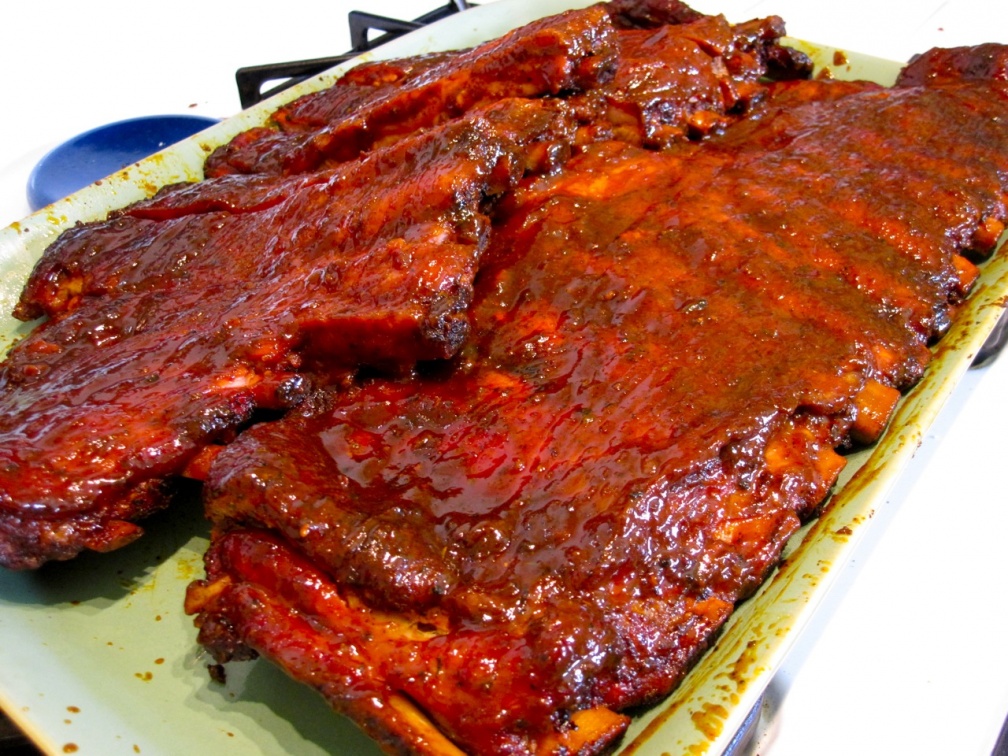
I started with the dry rub, a concoction of salt, sugar, and spices that covers the outside of the ribs and is responsible for a lot of the flavor. Here’s a pic of all the ingredients from Cook’s dry rub:
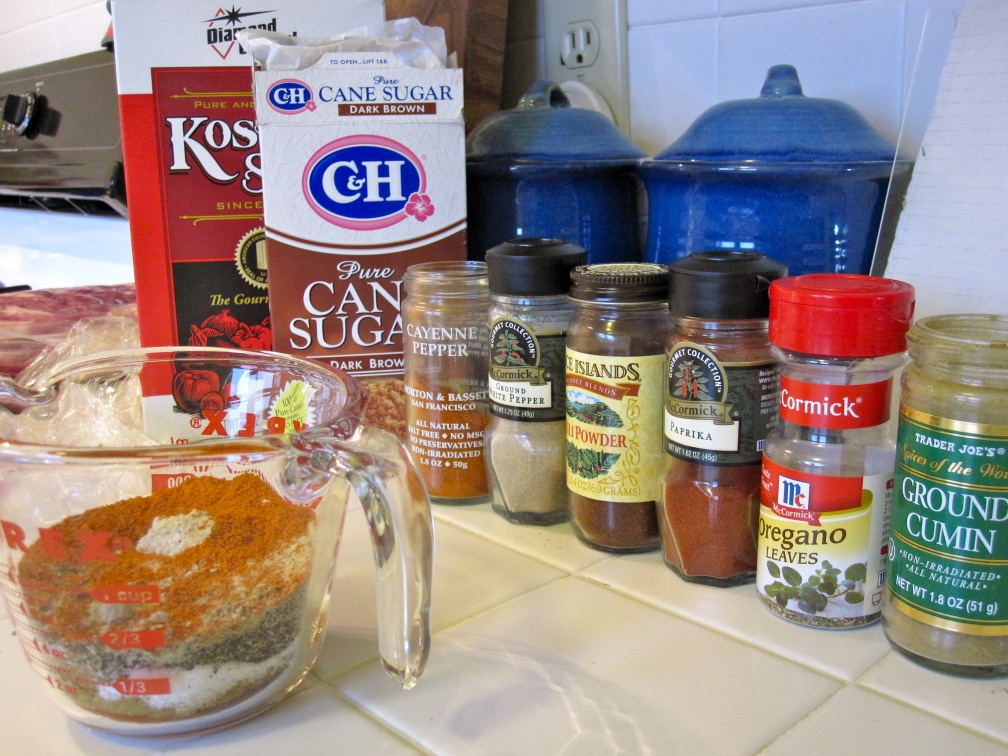
I coated two full racks of pork spare ribs with the rub:
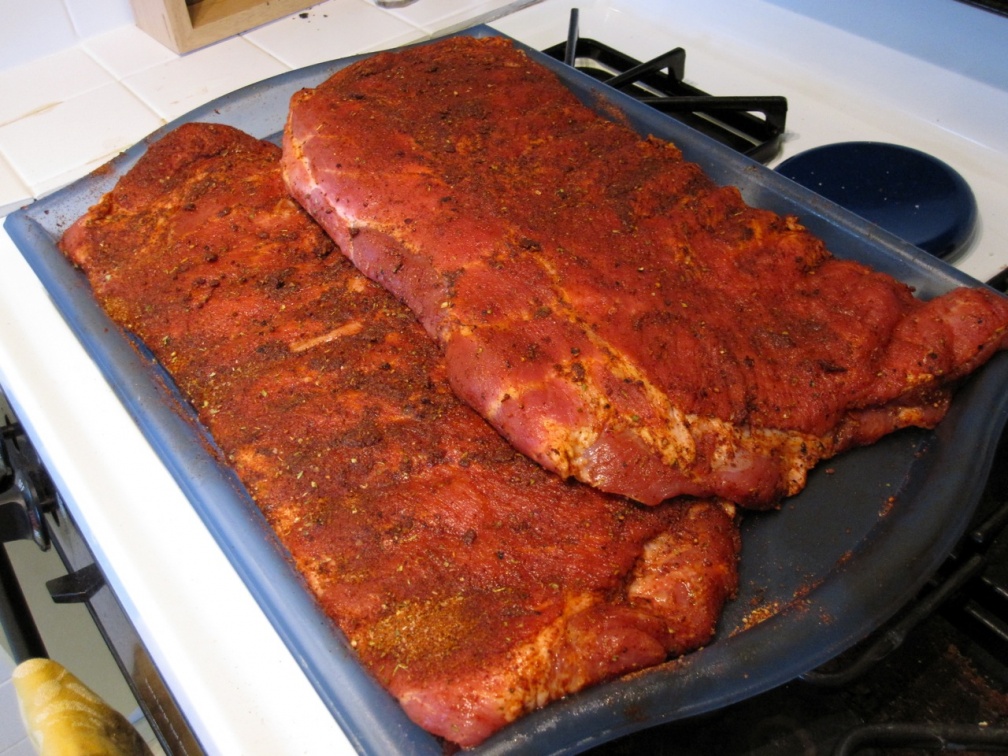
…and let them sit for a while, soaking up the goodness.
Now, technically I don’t have the right equipment for barbecue. In the ideal case I’d have a dedicated smoker, which not only separates the meat as much as possible from direct heat from the coals, but also rotates or moves it to ensure even cooking. A nice smoker is the heart of any good BBQ joint, but it’s just not accessible to the average home cook. There are ways around this of course, with dedicated home smokers or even retrofitted oil drums and old refrigerators, but I decided to go with an even simpler method (the one suggested by the Cook’s guide), which is just to use my standard kettle grill for the smoking, putting the meat as far away from a low bed of coals as possible.
The “traditional” smoke source is, of course, hickory, but that sounded a bit too southern for me. My Texas roots drew me to mesquite instead. Luckily, chips of both kinds are easy to find even at hippie west-coast grocery stores. I soaked them for an hour before I started the coals, so they would combust slowly and give off plenty of flavorific smoke.
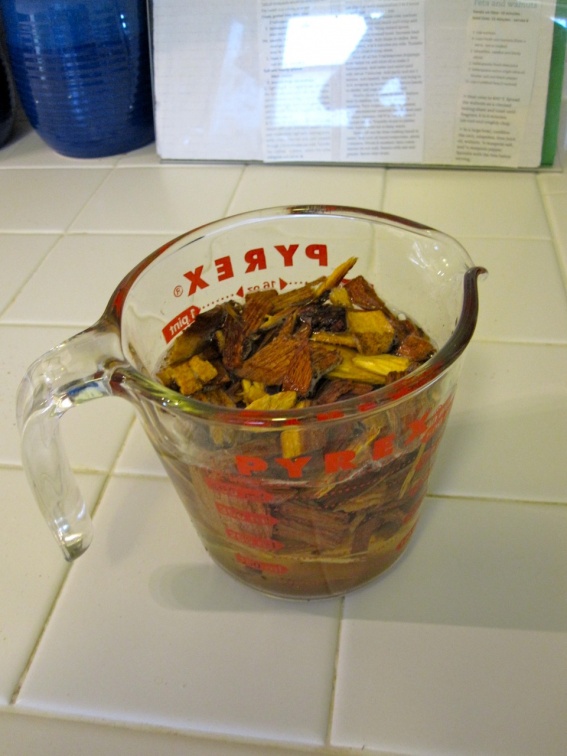
After the chips were good and damp, I put them on a low fire on my kettle grill, dialed in the temperature as best I could to about 275F, and laid the ribs on. I added coals as necessary and turned the ribs about every 30 minutes for about three and a half hours.
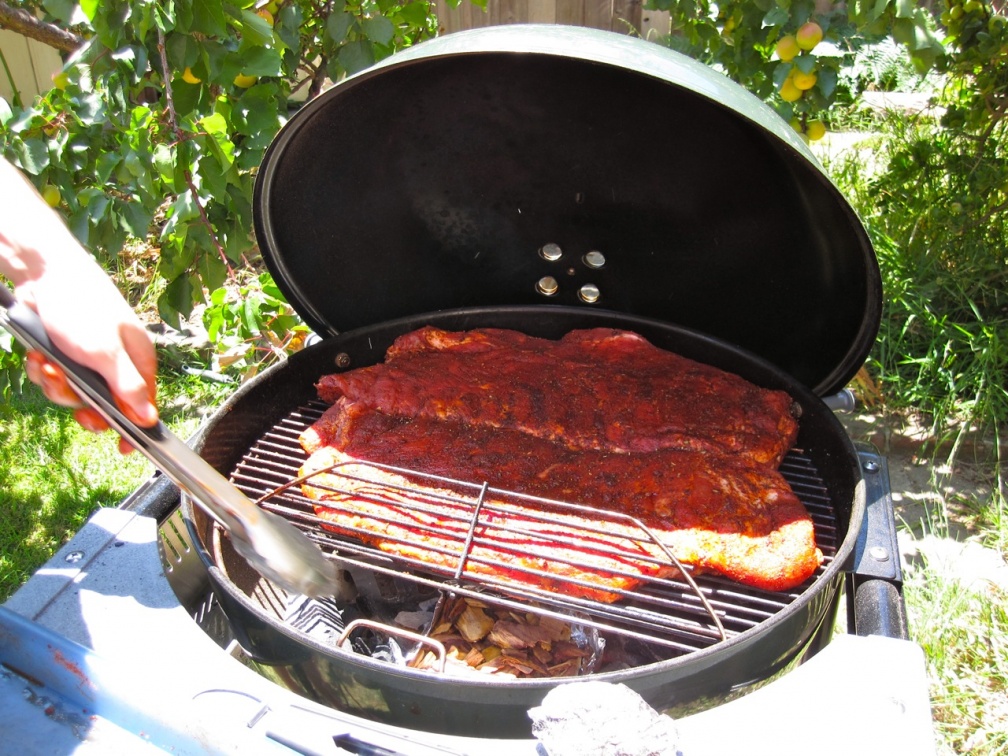
I should say that 3.5 hours is way, way less time than I could have left them on for. Traditionally, ribs on a full-size smoker might cook at 225F for 8 hours or more… it’s hard to go too long, assuming that you recover the rendered fat somehow to keep the ribs from getting too dry. But, since I was limited to kinda-sorta indirect heat, I did a much shorter time at a higher temperature. The Cook’s recipe tries to mitigate some of the toughness issues this raises by specifying an hour-long rest right after the ribs leave the grill, sealed tightly in foil and paper bags. After the rest, we pulled out the ribs and added some rib sauce imported from Peggy Sue.
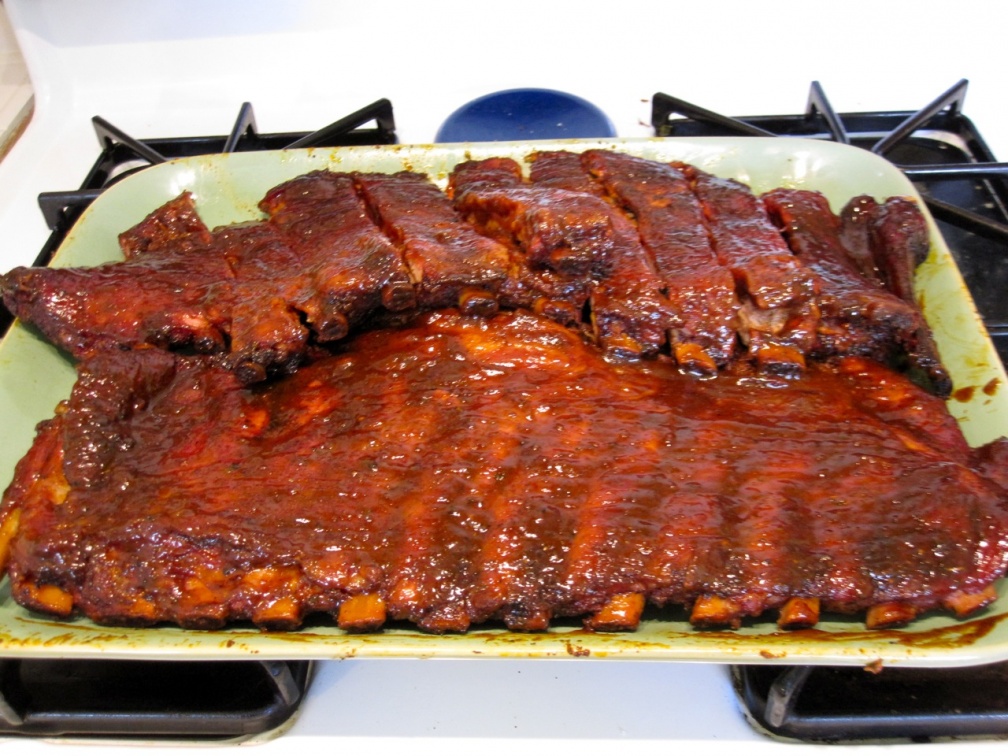
How’d they turn out? Well, thanks to the excellent rub, mesquite smoke, and Peggy Sue sauce, the flavor was damned good. Nice and smoky, but still with some real porkiness still coming through… “authentic.” The texture, though, wasn’t quite there. The meat was thoroughly cooked and deep red from smoking, but I think it was just too close to the coals, or maybe the coals were too hot, and so it was a bit chewy and not fall-apart tender like it should be. If I were doing it again, I’d try to plan to double the smoking time, build an even lower fire, and use a drip try to catch the rendered fat so it would stay in contact with the meat.
Coming up next: my more successful adventure with pulled pork butt!